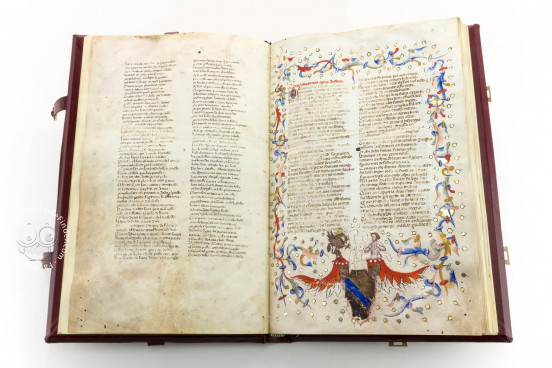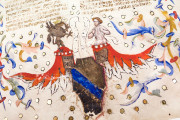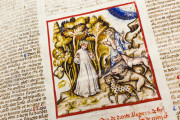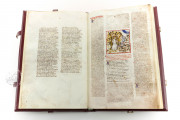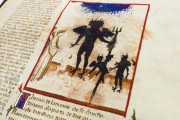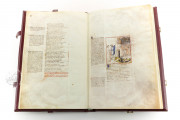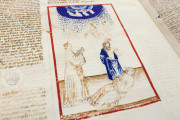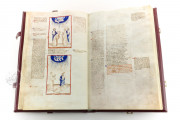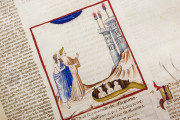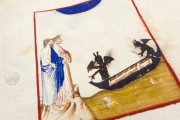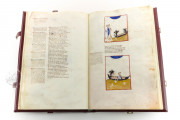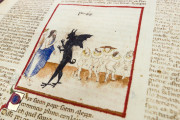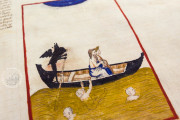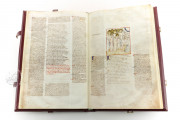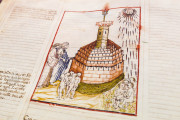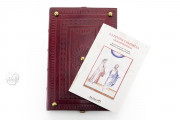The Gambalunga manuscript of the Divine Comedy is also known as Dante Gradenighiano or Gradonighiano after the fourteenth-century Venetian nobleman Giacomo Gradenigo, a diplomat and fine poet who composed and wrote the text of the codex. He copied the Divine Comedy and enriched it with original commentary and verses by Meneghino Menzani, Jacopo Alighieri, and Giovanni Boccaccio.
Gradenigo's comments on the Comedy represented an upgraded form of the influential commentary written by Jacopo della Lana. An acrostic contained in the manuscript reveals "Iacomo Gradonico" as the author and copyist of the codex.
The Decorative Apparatus
The manuscript misses some verses in each of the three sections of the Divine Comedy entitled Inferno, Purgatorio, and Paradiso. Thanks to Gradenigo's extensive commentary, the Gambalunga manuscript represents an important witness of the cult of Dante in the Venetian region.
Along with the commentary, the codex bears a refined decoration in small miniatures. The opening illumination depicts Dante and Virgil and is followed by twenty-three delicate pen drawings with watercolor decoration. The identity of the illuminators at work on this manuscript is still under debate.
The most refined quality of the first miniature in comparison with the less detailed drawings that follow suggests that more than one artist worked on the codex. There is general agreement on the fact that the illuminator was active in the circles of Padua, displaying a style close to the Master of the Initials of Brussels.
The Manuscript Reveals Its Past
Remarkable information on the original aspect of the codex and its costs are contained in the manuscript. A note written by Gradenigo on the flyleaf at the end of the book provides unique information about the price of the 24 miniatures, the binding and the parchment, which cost 74 lire and 15 soldi.
The binding was attributed to one Cerbero, who worked at the University of Padua. Cerbero provides evidence that the manuscript was stored in Padua when Gradenigo visited the city in the last decade of the fourteenth century.
The manuscript represents the coat of arms of the Sanudo family (fol. 2r) along with the emblems of Giacomo Gradenigo. As is usual in manuscripts, the arms of the Sanudo family were painted over the original emblem of Gradenigo. After being in the hands of Giacomo Gradenigo, the codex passed on to the Sanudo family, who made their arms visible at the opening of the book.
We have 1 facsimile edition of the manuscript "Divine Comedy - Gambalunga Manuscript": Divina Commedia dei Malatesta facsimile edition, published by Imago, 2015
Request Info / Price
